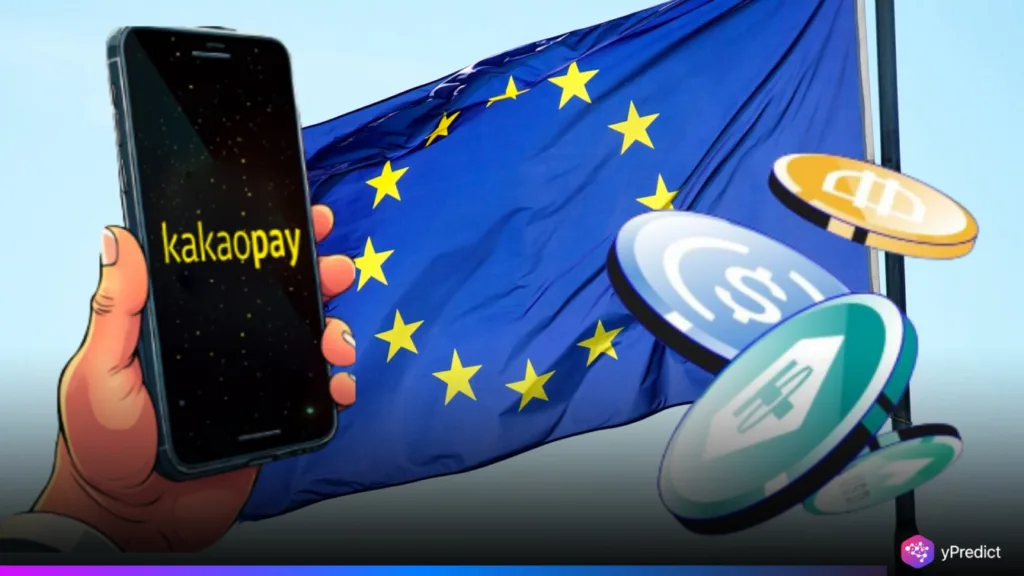
KakaoBank, South Korea’s largest mobile bank, is set to expand into the stablecoin market. This is by following a seismic policy shift towards the market. It is now permitted to issue pegged stablecoins as of June 2025. This progression signifies not only an expanding AI-driven momentum in South Korea’s fintech ecosystem. With the backing of President Lee Jae-myung’s government, this initiative aims to exploit opportunities stemming from a rapidly digitizing economy and a keen existing position in terms of crypto adoption and ownership.
In 2024, South Korea’s rate of crypto adoption for internet users between 16–64 years old was 10.8%. With this announcement, KakaoBank is positioning itself at the center of an exciting area of digital finance. It is where artificial intelligence will dramatically alter the way banks, users, and coins interact.
Regulatory Green Light Boosts Stablecoin Ambitions
The new guidelines permitting won-pegged stablecoins have opened the door for regulated financial institutions to enter the stablecoin market with government backing. For KakaoBank, this development comes at a significant point. The incorporation of artificial intelligence in the areas of transaction monitoring, fraud detection and liquidity management has made stablecoins considerably safer and more efficient.
The entry of KakaoBank’s offers allows it to encapsulate both the evolving regulatory certainty in South Korea, and progress in AI-enabled financial applications. AI models are expected to handle large amounts of remittances and cross-border transactions, allowing clients to avoid usual fees. A 2023 study by the Bank of International Settlements estimated stablecoin-backed AI systems. It could reduce remittance costs by up to 90%.
KakaoTalk Infrastructure Powers Scalable AI Deployment
KakaoBank’s technological edge lies in its connection to Klaytn blockchain, which supports the KakaoTalk app’s 45 million users. This existing user infrastructure could fast-track nationwide stablecoin rollout. Using Artificial intelligence in Kakao’s framework can enable instant token issuance, balance checking, and real-time regulatory compliance.
Kakao can also embed Artificial intelligence within the KakaoTalk interface so the bank can implement smart functionality on the app, such as personalized payment flows and AI-enabled fraud prediction, making the stablecoin market a mobile experience. KakaoBank’s move reaffirms the real-world implications of AI in making the use of digital assets. It is simple and intuitive for everyday users in Korea.
Crypto Ownership Trends Favor KakaoBank’s Entry
South Korea’s relatively high crypto ownership rate makes it a fertile ground for stablecoin adoption. The local user base has already embraced digital wallets and blockchain-backed platforms, lowering the barrier to entry for KakaoBank’s new product. AI-based market analysis tools can help the bank identify ideal launch timings and pricing structures, based on real-time user behavior and transaction data.
Unlike global stablecoin leaders like Tether, which operate with broader but less personalized models, KakaoBank’s AI-backed system could focus entirely on domestic users and use cases, providing a compliant, hyperlocal alternative.
AI-Driven Stablecoin Rivalry Heats Up
KakaoBank’s stablecoin ambitions are not just about entering the stablecoin market. They signal a shift in how traditional banks use AI to challenge crypto-native giants. With regulatory support, KakaoBank’s AI-infused approach allows faster settlement, instant customer feedback. It is a precise compliance alignment with South Korea’s digital finance laws. As global stablecoin providers face increased scrutiny, KakaoBank can carve out a niche by combining machine learning with user familiarity. Its deep AI infrastructure may soon become a blueprint for other mobile-first banks seeking to join the crypto space.






